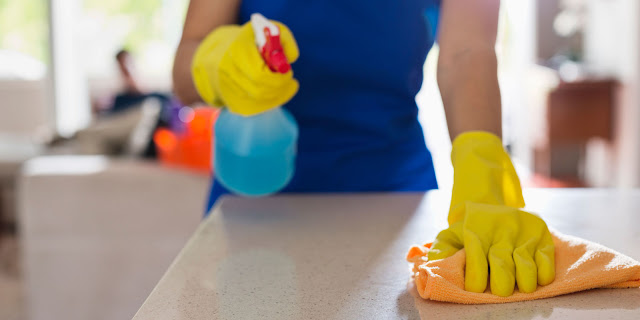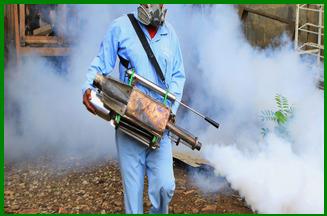Different types of Chemical Disinfectants
• Alcohols – Ethyl, isopropyl, trichlorobutanol
• Aldehydes – Formaldehyde, glutaraldehyde
• Dyes
• Halogens
• Phenols
• Surface active agents
• Metallic salts
• Gases – ethylene oxide, formaldehyde
MODE OF ACTION OF CHEMICAL DISINFECTANTS:
- Protein coagulation
- Disruption of cell membrane resulting in exposure, damage or loss of the contents.
- Removal of free sulphydryl groups essential for the functioning of the enzymes.
- Substrate competition – a compound resembling the essential substrate of the enzyme diverts or misleads the enzymes necessary for the metabolism of the cell and causes cell death.
ALCOHOLS
- Ethanol (80% v/v ethyl alcohol) or 2-propanol (60-70% v/v iso-propyl alcohol) solutions are used to disinfect skin and decontaminate clean surfaces.
- Spectrum: Effective against fungi, vegetative bacteria, Mycobacterium species and some lipid-containing viruses.
ALDEHYDES
- Formaldehyde: Precautions are required when handling formaldehyde
- Formalin is 37% w/v formaldehyde gas in water.
- Spectrum: Active against most microorganisms.
Uses of formaldehyde:
- Formaldehyde is used to preserve anatomical specimens, and for destroying anthrax spores in hair and wool.
- 10% formalin containing 0.5% sodium tetraborate is used to sterilize clean metal instruments.
- Formaldehyde gas is used to sterilize instruments, heat sensitive catheters and for fumigation of wards, sick rooms and laboratories.
- It can also be used for clothing, bedding, furniture and books.
- To disinfect equipment such as centrifuges or biosafety cabinets.
Glutaraldehyde:
- Concentration: Glutaraldehyde is commercially available as 2% w/v aqueous solution which must be made alkaline to "activate" (e.g. by addition of 0.3% sodium bicarbonate).
- Use: for instruments such as cystoscopes, bronchoscopes, corrugated rubber anesthetic tubes, face masks, endotracheal tubes, metal instruments, polythene tubing.
PHENOLS
- Carbolic acids
- Chlorophenols
- Chloroxyphenols
- Hexachlorphene
Chlorhexidine
- Mainly used for preliminary sterilization of infected glasswares in laboratory, disinfection of excreta, cleaning floors of wards and operation room in hospital.
- Chloroxylenol (dimethyl phenol) is active ingredient of dettol.
- Savlon (chlorhexidine+cetrimide) is widely used in burns, wounds, as bladder irrigant, for surgical instruments and pre-operative disinfection of skin.
- Used as antiseptic. Apply alcoholic chlorhexidine to the skin in the event of accidental contamination.
HALOGENS
Chlorine Compounds
- Generally used in the form of sodium hypochlorite.
- Concentration: Use at 0.1% as a general disinfectant.
- Uses: It has great widespread use as a laboratory disinfectant on surfaces of bench and in discard spots.
Iodine Compounds
- Use: Most commonly used for skin disinfection and decontaminating clean surfaces.
FUMIGATION
CONVENTIONAL (FORMALDEHYDE)
- Formaldehyde gas is used for fumigating operation theatres, sick rooms and laboratories.
- Formaldehyde gas generated from a chemical reaction spreads in the room and sterilizes the entire room. The room is kept closed for 48 hours.
- Caution: Formaldehyde can react with free chlorine to produce toxic gas.
- Remove hypochlorite solutions and hydrochloric acid from spaces to be decontaminated.
- Irritant vapours are released hence neutralize with ammonia following decontamination.
NEWER METHODS OF CHEMICAL DISINFECTANTS:
ETHYLENE OXIDE
- Uses: it has got a good degree of penetration power, even through plastics.
- Plastic goods, polythene tube, artery and bone grafts, cystoscopes, vaccines and culture media can be sterilized by ethylene oxide.
- These objects are kept in a cabinet from which air is removed by a vacuum pump and then a mixture of ethylene oxide and carbon dioxide is introduced in the cabinet.
BETA PROPIOLACTONE
- It is a condensation product of ketone and formaldehyde having a boiling point of 163’C.
- It is capable of killing all microorganisms including viruses.
- Uses: Although BPL has a low penetrating power as a gas, but it is believed to be more efficient for the purpose of fumigation.
- Its biocidal action is very rapid and only 0.2% BPL is used for the sterilization of biological products.
- Limitation: unfortunately BPL has carcinogenic effect.
HYDROGEN PEROXIDE
- A concentration of 3% w/v generally used for disinfection.
- Use: H2O2 is applied to disinfect plastic implants, contact lenses, and surgical prostheses.



No comments:
Post a Comment